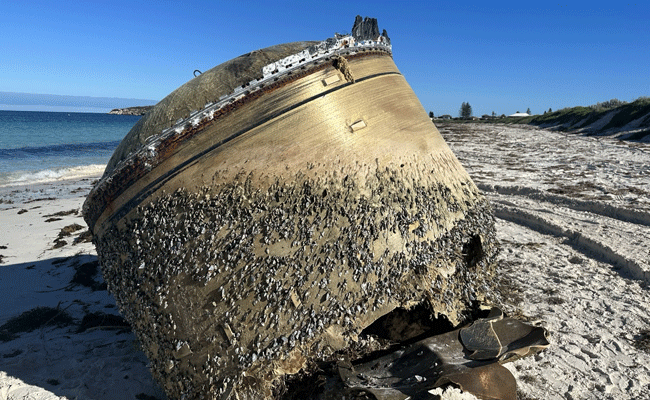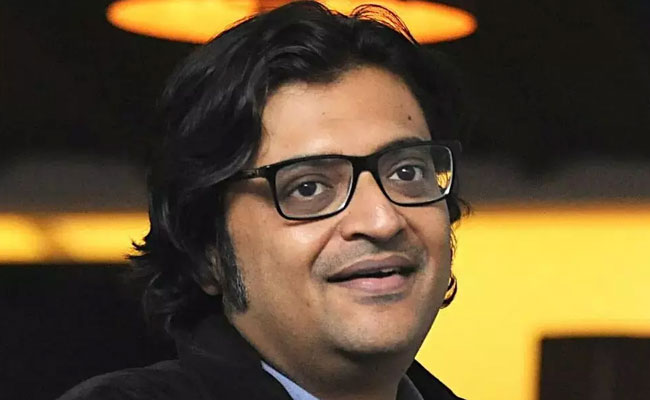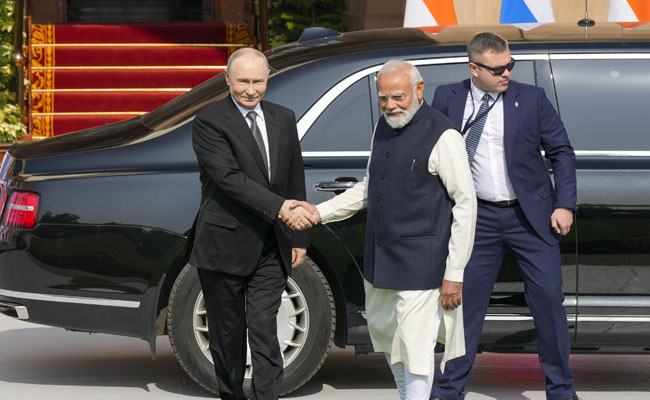Melbourne (PTI): A dome-shaped mysterious object has washed up on a remote Australian beach, amid speculation that it could be from a 20-year-old Indian rocket that was used for launching a satellite.
The canister was discovered near the beach in Green Head in Western Australia (WA) about 250 kilometres north of the city of Perth on Saturday. When contacted by PTI, the Indian Space Research Organisation (ISRO) sources confirmed receipt of a formal communication from the Australian Space Agency. However, they did not provide the details.
The bizarre-looking object has been declared a piece of space junk, while national agencies, including the Australian Space Agency (ASA), continue working to identify its origin.
The copper-coloured bulky cylinder, which stands taller than a human, appears to be damaged at one end and is covered with barnacles, indicating that it has spent a significant amount of time at sea before washing up.
"We are currently making enquiries related to this object located on a beach near Jurien Bay in Western Australia. The object could be from a foreign space launch vehicle and we are liaising with global counterparts who may be able to provide more information," the ASA said in a series of tweets on Monday.
As the origin of the object is unknown, the community should avoid handling or attempting to move the object, it said, adding that if the community spot any further suspected debris they should report it to local authorities and notify the agency.
"We are committed to the long-term sustainability of outer space activities, including debris mitigation, and continue to highlight this on the international stage," the agency said.
In a statement, Western Australia Police said that it is believed the item is space debris and will be managed as such until it can be determined otherwise. However, a space expert says the object could be from a 20-year-old Indian rocket.
European Space Agency engineer Andrea Boyd said experts believed the item fell from an Indian rocket launching a satellite, the Australian Broadcasting Corporation reported.
"We're pretty sure based on the shape and the size, it is an upper-stage engine from an Indian rocket that's used for a lot of different missions," she said.
"Based on the amount of barnacles, it's probably not the one from this year," she said. She said it could be 20 years old, the report added.
"But at the same time, when it gets thrown around the ocean it does tend to look older than it would normally."
Boyd said the engine was designed to fall off after the launch.
"It takes a lot of effort to get up to orbit, so the first and second and third stage (engines) usually fall off and end up in the Indian Ocean, so it's probably come from that with the currents and washed up on the beach," she said.
Within an hour of the first media report on the unusual find, many social media users already came up with a theory the object was a piece of space junk from an Indian rocket, the Sydney Morning Herald newspaper reported.
Space experts agreed, with Australian National University astrophysicist Dr Doris Grosse and Flinders University space archaeologist Dr Alice Gorman believing it was likely a fuel cylinder from the third stage of a launch by India's space agency, it said.
Some even theorised the debris could have come from a specific mission PSLV-CA C46 which launched in May 2019 and dropped some debris in the ocean to Australia's north-west and south-east, the report added.
Police earlier labelled the object as "hazardous" as they worked to identify if there was a risk to the community.
After analysis of the object, the Department of Fire and Emergency Services and the Chemistry Centre of WA found it posed no risk to the community. But Boyd said it was important people did not touch the object.
"It might still have some residual fuel and you just don't want to get people touching that," she said.
Western Australia Premier Roger Cook said the object could end up at the WA Museum.
"I did make the observation this morning that perhaps this will be an addition to the Sky Lab pieces that we have in the museum and might add to our growing collection of space debris that seems to be collecting in WA," he said.
Space debris both man-made and natural has a habit of coming down in WA's vast outback, although it is rare for it to be found washed up on the state's 12,895 kilometres of coastline. Most famously, the Skylab space station came hurtling back to Earth in 1979, with pieces of the rogue station found in the most remote of outback locations in Balladonia, north-east of Esperance in WA's south.
The local council hit NASA with a USD 400 littering fine, which reportedly remains unpaid. But scientists with their eyes trained on the skies have also recovered fragments of space rocks which have made it through the atmosphere and slammed into the ground in WA's outback.
Let the Truth be known. If you read VB and like VB, please be a VB Supporter and Help us deliver the Truth to one and all.
New Delhi: In a striking turn that surprised even his regular viewers, Arnab Goswami spent the evening of December 4 taking direct aim at the central government over the ongoing crisis in the domestic aviation sector. The debate, aired on Republic, focused entirely on the severe disruption caused by IndiGo flight cancellations and the state of air travel in the country. The tone was sharp, emotional, and openly critical, raising the larger question of whether this marks a homecoming of sorts for the anchor long accused by critics of being soft on the government.
Goswami began the show by saying the central government had “completely let down” air passengers. He pointed to chaotic visuals from airports in Pune, Ahmedabad and Mumbai, describing passengers packed into crowded spaces, long queues, and travellers lying on the floor with little access to basic facilities. He said anyone travelling with children or elderly parents would understand the distress such situations cause.
According to him, the government often claims to have improved the aviation sector, but the day-to-day experience of passengers tells a different story. He argued that whatever help the government may have extended has benefited individuals and individual companies, not the sector as a whole.
Goswami highlighted data from the last three days, saying IndiGo had canceled 1,232 flights in November. He broke down the reasons for the cancellations: 755 linked to crew and FDTL constraints, 258 due to airspace and airport restrictions, 92 because of failures in air traffic control systems, 127 for other reasons.
He said passengers in India are often “taken for granted” and that only in this country can such large-scale cancellations take place without consequences.
Throughout the debate, Goswami repeatedly returned to the theme of duopoly. He said Air India and IndiGo together control 91.5 percent of the aviation market, leaving only a small share for others like Akasa and SpiceJet. This, he said, gives the two big players the power to decide prices and escape accountability.
“They can set the prices. They can torture passengers. They can be not answerable for air crashes.” He added.
Goswami also questioned why such a structure is allowed to exist if the government claims it opposes monopolies. He asked whether the government has made Air India accountable after the recent air crash, and said he did not believe so.
“We are told that the Modi government does not like monopolies. First of all, I don't agree with that. There are too many monopolies happening.” He said.
The anchor accused Air India of operating aircraft that were not airworthy and said no serious action followed. According to him, any other minister in charge of civil aviation would have been removed after such incidents, but nothing happened.
“He is not answerable. And why is the central government not bothered about it? Because he comes from the TDP, an alliance party. So let him do,” he said.
He added that Air India continues to seek government support, including compensation for losses after the Sindhur episode. Goswami questioned why public money should be used to support the airline, drawing a comparison with the earlier controversy involving Vijay Mallya seeking help from the Manmohan Singh government a move that was labelled as scam.
Goswami said passengers are suffering because of delayed flights, sudden cancellations, and lack of compensation. He criticised the DGCA, saying it was not enforcing safety and operational norms. He also questioned why the Prime Minister’s Office had not intervened.
He noted that Republic had carried multiple exposés on these issues and claimed that Air India chooses to give interviews and advertisements only to other channels.
He also called for Parliament to debate the aviation mess and examine whether monopolies or duopolies should be allowed in a nation of India’s size.
“I'm sure the government's not going to be happy with us saying this, but someone's got to speak up for the people of this country.” He added.
Known by his critics as the “Godi Media Chief”, Goswami’s direct attack on the Modi government over civil aviation raised eyebrows across media circles.
Whether this is a one-off outburst or a sign of a new editorial direction is something viewers will be watching closely.
#AviationCollapse | India’s aviation sector is in turmoil as IndiGo’s mass cancellations and Air India’s alleged safety lapses leave passengers stranded. The disruption raises serious questions about airline management, regulatory oversight, and who is ultimately responsible for… pic.twitter.com/Dqt6pcoW8w
— Republic (@republic) December 4, 2025





